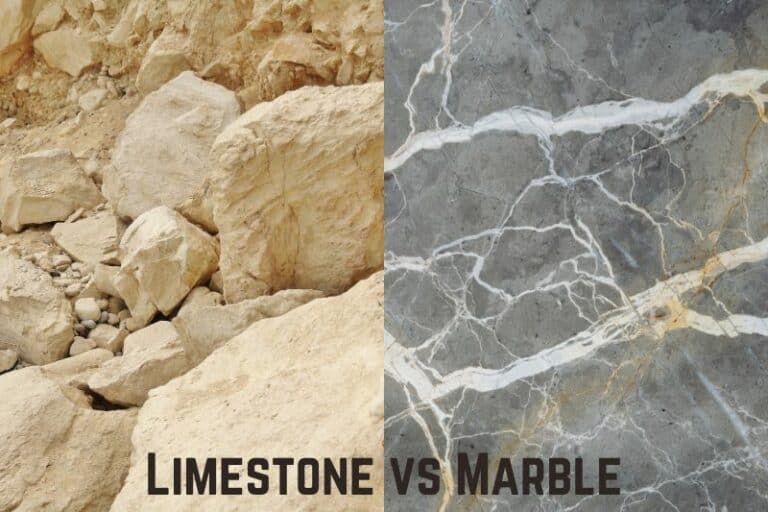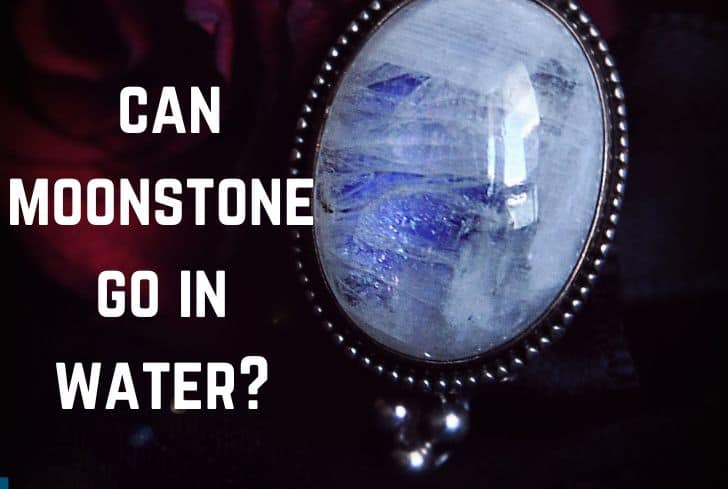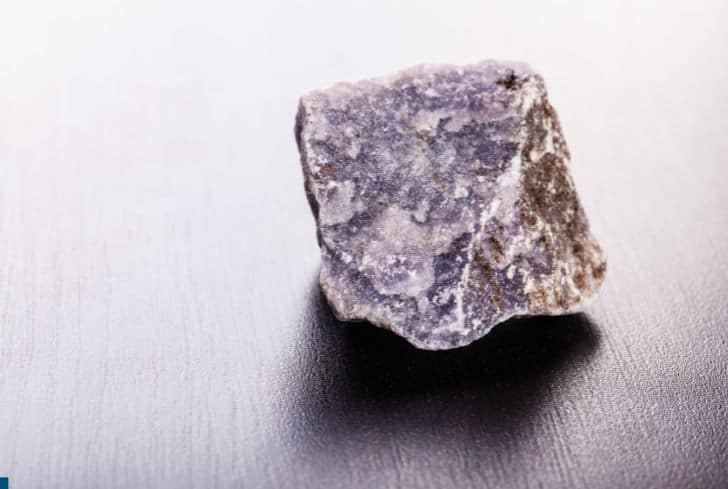Can Blue Lace Agate go in the water? (And Salt Water)
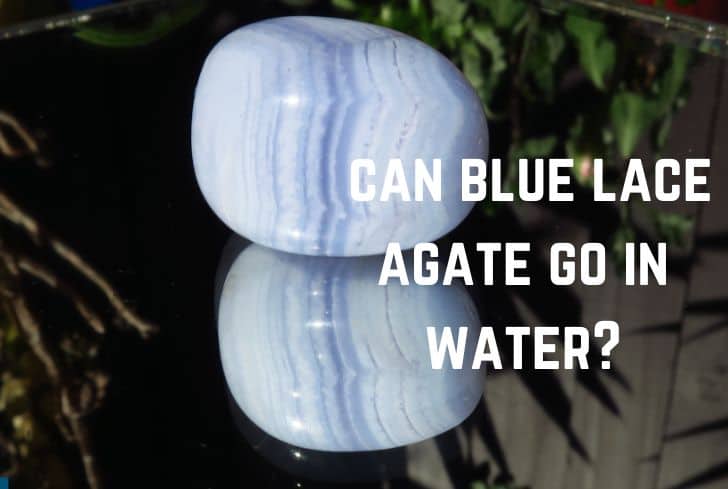
Blue lace agate is a variety of agate, which is a common rock formation made up of quartz and chalcedony. Agate comes in a wide variety of colors, and its use in jewelry goes back to the 3rd century BC.
Have you ever wondered if blue lace agate is safe to put into water? In this article, we are going to discuss just that. We will also look at its interaction with sunlight and salt water. Finally, we will talk about checking the authenticity of the stone and taking proper care of it.
Is Blue Lace Agate Water Safe?
Yes, it is safe to put blue lace agate into water. Blue lace agate is known for its hardness, and its value is 6.5-7 on the Mohs Hardness Scale. This means that it can survive underwater, but as in the case of all stones, it should not be immersed for too long.
Mohs Hardness Scale is a relative measure of the resistance of a mineral to scratching. It also acts as an indicator of a mineral’s interaction with water. If a mineral has a value above 5 on the scale, it means that it can survive underwater.
Since blue lace agate’s hardness is 6.5-7, it can be safely immersed in water. But this should be done only for a limited amount of time. Over long periods, this can be damaging for the stone as water enters into their tiny cracks and widens them.
Can Blue Lace Agate go in the Sun?
Yes, like all agate, blue lace agate can also go in the sun. Agate is a strong stone, with a hardness of 6.5-7 on the Mohs scale. However, it should not be put out in sunlight for extended periods. Harsh sunlight can fade the color of the stone, especially if it has been dyed.
Keeping stones out in the sun is one of the most common ways of recharging them. But one must ensure not to do this for too long or too often. The UV rays of the sun can make the stone’s dye fade. So, you can put your stone behind a window, and the glass will serve as protection.
You should not leave your agate out in the sun for more than 3 hours. Try keeping it out during the morning hours when the sunlight is gentle. Other popular ways of recharging the stone include leaving it in the moonlight, placing it in brown rice, etc.
Can Blue Lace Agate go in Salt Water?
No, blue lace agate should not be put into salt water. While agate is a pretty hard stone, which can be safely put into water, it is not recommended to let it stay immersed for long. If you put it in salt water, it will further increase the chances of damaging the stone.
Agate has a hardness of 6.5-7 on the Mohs scale, meaning that it can survive underwater. But despite that, leaving a stone immersed for a long time is never a good idea. The water seeps through the cracks in the stone and widens them, possibly damaging the stone.
Saltwater makes things worse since even after the water evaporates, the salt particles remain. These additional particles further aggravate the expansion of cracks. Water also tends to dull the color and lustre of the stone.
Sometimes, agate stones are mixed with other metals, and they might also react adversely with water, ruining the color of the stone. Unlike soft stones like selenite, agate will not dissolve when put into water. But it’s still not a great idea to leave it immersed for a long time.
Can Blue Lace Agate go in Salt?
Yes, agate can go in dry salt. Saltwater has the potential to seep into the cracks of the stone, widening them and damaging the stone. But dry salt, without the help of water, cannot get into these tiny crevices. Therefore, dry salt is not harmful to agate.
While dry salt itself may not be harmful to agate, some argue that if the salt remains on the surface, future encounters with water can carry it into the crevices of the stone. Although this is possible, it is rather unlikely, and it will have minimal effect on the structure and appearance of the stone.
How do you Clean Blue Lace Agate?
Blue lace agate is a durable gemstone with a value of 6.5-7 on the Mohs Hardness Scale. This means that it can survive underwater, and our cleaning method will consider this. Here are the steps you need to follow in cleaning this stone:
- Mix mild soap water with lukewarm water. Make sure that the water is not too hot, as excessive heat can damage the stone.
- Soak the blue lace agate stone in the solution for 3-5 minutes. This is the ideal duration, and the stone will not be harmed by the water in such a short while.
- Take a brush with a soft bristle and scrub the stone, ensuring that you clean the edges and the crevices of the stone.
- Rinse the stone in running water and wash off any excess soap.
- Let the stone dry in the air. Make sure you flip it around to remove any water from the crevices.
Ultrasonic cleaners and steam are not advisable for agate. The method described above, using soap and water, is the ideal one.
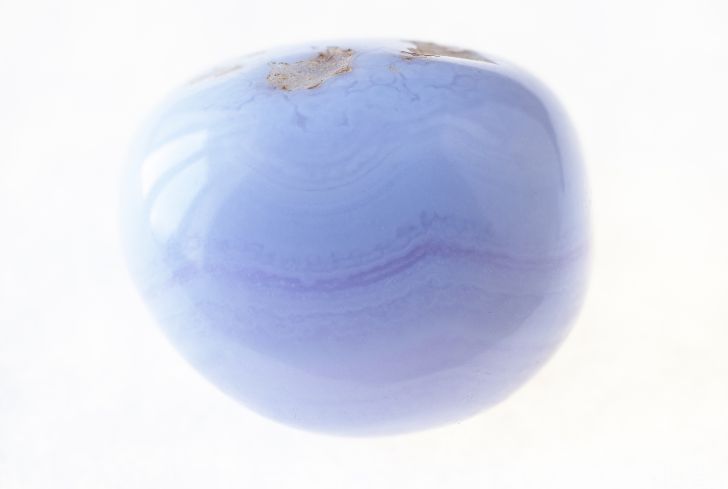
How Can You Tell if Blue Lace Agate is Real?
Blue lace agate is a variant of agate, and it shows a lace-like pattern in forms like swirls, eyes, bands, etc.
Real agate is found in Africa and is particularly hard. These are found as nodules in the cavities of volcanic rocks. When the silica-rich fluids of the volcanic material fill up the cavities, they result in layers of chalcedony, quartz, and agate.
Dyed chalcedony and jasper are often passed off as blue lace agate. To ensure that your blue lace agate is real, keep these points in mind:
1. Colour: Real agate will exhibit soft natural colours like white, light yellow, light blue, etc. Fake agate, on the other hand, will be unusually bright. It might be of vibrant colours like neon blue, emerald green, solid black, etc.
2. Hardness: Real agate has a value of 6.5-7 on the Mohs Hardness Scale, meaning that it is quite durable. With a knife, you will not be able to scratch a real agate. If it gets scratched, perhaps the stone is not real agate.
3. Transparency: Real agate is translucent, and you should see light partially go through it. Fake agate would likely be opaque since it’s made out of plastic or jasper.
4. Appearance: Sometimes, glass is also used to create fake agate, and in this case, you need to look closely at the stone with a magnifying glass. If there are bubbles in it, it’s not real agate.
5. Dye Concentration: Real agate is formed through natural processes, and this leads to a variation in the density and chemical composition of different layers. Use a magnifying glass and see if there is a lot of contrast in the color of the layers (suppose there is a lot of concentration in one area). This might be a case of fake agate.
Is Blue Lace Agate Expensive?
No, like most variants of agate, blue lace agate is not expensive. A pound of rough agate costs just a few dollars. You can get a small (1-2 inch) blue lace agate stone should for a price between $2 – $10. On the other hand, something like the Mexican fire agate can cost you over 50$ for the same size, and even higher prices for better quality.
Since the 3rd century BC, agate has been used in jewelry and seal stones. Today, it is valued for its hardness, ability to retain high polish, and resistance to chemical attack. It is mainly used in laboratories to create knife-edge bearings for balances, pestles for crushing chemicals, and for leathercraft tools.
In jewelry, the price of agate is determined by the following factors:
- Weight: For both rough and tumbled agate, the price depends on the weight. For tumbled agate, the prices can rise exponentially, with heavier stones costing much more in proportion to their lighter counterparts.
- Clarity: If the agate is clear (without spots), then it is considered of higher quality and price.
- Color: Grey, pale, and dark color stones usually command lower prices. On the other hand, colors like white, orange, and blue increase the price.
Other factors like shape, rarity, and overall appearance also play a part.
Conclusion
In this article, we have discussed whether blue lace agate can go in the water or not. Since it has a hardness of 6.5-7 on the Mohs Hardness Scale, blue lace agate is perfectly safe underwater, but it should be immersed for too long. We looked at its interaction with sunlight and salt. We also talked about its pricing, authenticity, and the steps to take proper care of it.

